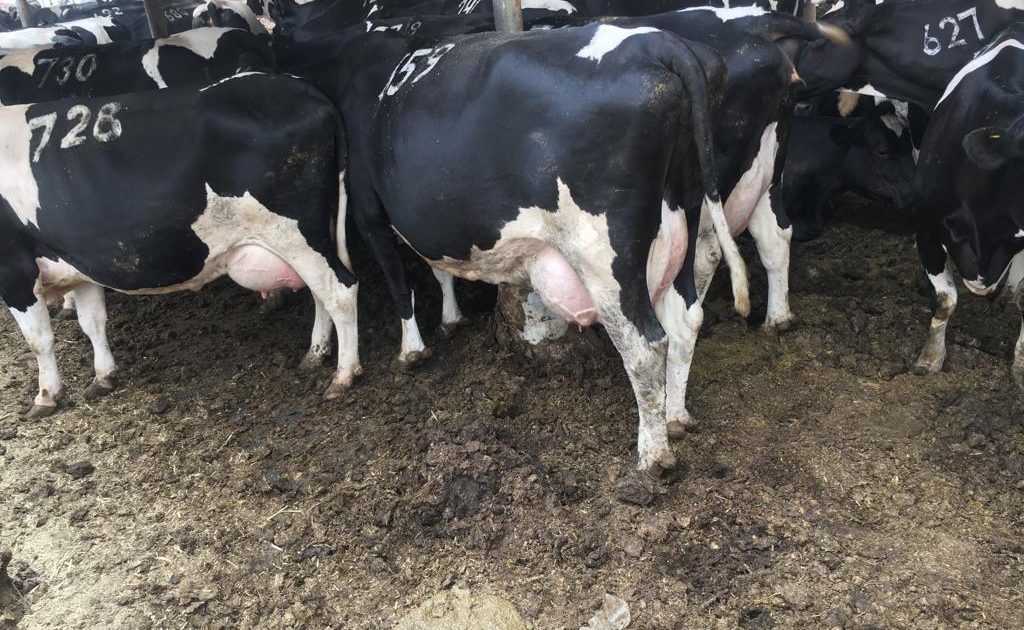Agriculture in the now Tharaka-Nithi County and the entire Eastern slopes of Mount Kenya dates back to the colonial period, when several cash crops were introduced in Kenya by the white settlers.
When the white man, to his astonishment, realized that the highlands in then British East Africa Protectorate had a similar climate to their homeland in Europe, they rushed in droves with the hope of making a living in farming.
They introduced cereals in the vast plain areas of Laikipia and Uasin-Gishu but were quick to realize that the steep slopes of the highlands were favorable for perennial cash crops that include coffee, tea and pyrethrum among other produce.
Dairy farming was also introduced with the foreigners bringing in exotic milk producing breeds of cattle from Europe.
To make them adopt to the African environment, the settlers went ahead and cross-bred their Bos-taurus species with the indigenous African cattle and came up with the hybrid dairy cattle that have survived to date,
As independence approached and Africans were allowed to venture into the prior settlers dominated cash crop farming, most people from the Eastern slopes of Mount Kenya, including those living in the current upper part of Tharaka-Nithi, saw this a delightful source of earning income. As they advanced their skills, their prowess grew and their prominence as one of the country’s coffee, tea and milk producers has never diminished.
Not even in unlucky times have farmers in this part of the country ever regretted their decision to venture into farming as their main source of earning a living.
It became their source of money to educate their children and prominent personalities in the county today, can attest to having been educated through proceeds from farming.
The venture has had its share of challenges, though, especially in the past two decades when most farmers virtually gave up on coffee and tea farming due to diminishing returns. Some even uprooted their perennial crops but many having tasted the sweet proceeds of the produce still looked forward to a better future.
The recent reforms in the sector announced by the Agriculture Cabinet Secretary (CS), Peter Munya, have brought back hope that these farmers had been anticipating for years, Coffee and tea farmers have taken advantage of the national government incentives, to sprout back to business. Coffee has been the major cash crop that is grown in the upper parts of Tharaka Nithi.
Joseph Gitari, a small-scale farmer in the Kibumbu, outskirts of Chuka town, disclosed to KNA that the coffee varieties that were introduced first in the area were Arabica breeds named SL 28, SL 34, and K7.
Gitari, who has been a coffee farmer for entire life, said these breeds of coffee had many disadvantages.
“SL 28 was drought resistant but susceptible to Coffee Leaf Rust (CLR) and Coffee Berry Disease (CBD). K7 could be grown in low altitude areas but had serious CLR. SL 34 was also highly susceptible to CBD, CLR, and suffered from Bacterial Bright of Coffee (BBC),” Gitari explained.
The farmer disclosed that due to these difficulties and inconveniences, the government through the Coffee Board of Kenya, decided to give farmers a better type of coffee variety.
“They introduced another Arabica coffee type; the ruiru-11 coffee variety. It was first released in 1985. Ruiru-11 could be grown in all coffee-growing areas,” he added.
Giari told KNA that not only is Ruiru 11, resistant to CBD and CLR but it is also compact, allowing farmers to intensify production per unit of land, especially in areas where the population is large and land is scarce.
It improved the quantity and quality of coffee sales for farmers. The quality of being disease and pest resistant makes it cheap to farm, reducing the cost of production and therefore increasing profits.
Kiang’odu Coffee Factory, which was started in the Kibumbu, outskirts of Chuka town, in the year 1998, is now a beehive of activities. The factory serves about 1,200 farmers in the area.
The Factory Manager, Ms. Dinah Wanja, disclosed to KNA that farmers get loans besides subsidized farm inputs, to boost their coffee farming businesses.
The factory Assistant Manager, Samuel Micheni, oversees the day-to-day activities at the factory and during the peak, he is assisted by two or three casual workers.
“The peak season for coffee harvesting is between April and July here in Chuka,” Micheni,” disclosed Micheni.
“For quite some time, coffee has not made much profit as it used to have years ago, but farmers still manage to get a little income to support their day-to-day activities,” added Micheni.
The Assistant Manager said that most farmers combine the crop farming with other crops instead of going out of the business all altogether, adding that this helps to diversify their earnings.
However, this year coffee has experienced a boom in sales with one kilogram going for Sh60. Many of the farmers are happy with the current state of affairs and would switch back to the crop if the trend continues.
Tea farming has also received a major boost by the current reforms, the Agriculture Ministry has further introduced kitchen gardening to increase food security not only in Tharaka Nithi but the whole country. Hope in Tharaka Nithi regaining its glory in agriculture, can be seen from their zeal in dairy farming.
Dairy farming in the County had been surviving amid unpredictable prices but with the more recent rise in demand, most serious farmers, especially from the Kirege, outskirts of Chuka town, have experienced considerable benefits cobbling an instant change in their livelihoods.
The amount of milk produced in the small location surpasses that of all other Sub-counties and its secret lies in taking advantage of their county government participation in breeding dairy cows.
The introduction of the cow breeding initiative by the Tharaka-Nithi County Government, saw the longing to rear dairy cows among farmers in Kirege thrive. Currently, only a few households are exempted from the activity, particularly those strained by the starting capital.
The officers hired by the county government, move in bodabodas around the County, conducting artificial insemination (AI) unlike in the past when the program was unavailable and farmers could not obtain their desired breed. The traditional method of insemination kept away farmers and at times animals may get injuries in the process.
The officers have become regular visitors in Kirege as the farmers have portrayed seriousness with their business. Top dairy companies such as New Kenya Cooperative Creameries (KCC) and Brookside dairies are competing to get a sip of their quality milk, the farmers have been left with additional proceeds.
The attraction of top notch dairy companies has not only accorded fortune to the farmer but also boosted the economy of the area. Small market centres with multiple salons, restaurants, shops, bars. Schools have sprouted with many registering improvement in both academia and physical health of learners.
The dairy farmers have embarked on making silage as a way of storing fodder for their animals. This practice of fodder storage which is known to be a tradition only in big farms is now actualizing in the area.
“It always becomes a challenge during the dry season as fodder is not easily accessible. But with silages we can face the dry spell,” explained Simon Muchomba, a dairy farmer.
Tharaka-Nithi can be compared to the biblical land that flows with milk and honey. The milk mostly collected during morning and midday hours, is then ferried to nearby cooling plants before it’s transported to the factories for processing.
During the last five years when most farmers threw their efforts into improved agriculture, businesses have sprouted and have never run out of stock.
Nearly each household rears dairy cows, and are adapting to new technology and change, animal feed stores grew in demand. Their number in the area is countless and as the farmers agree, the area is staked for huge growth.
“The few who aren’t rearing cows, keep animal feed stores and due to the huge demand of the commodities their business have similarly grown,” discloses Muchomba enthusiastically.
“I have watched my life change and that of others,” adds Simon who has reared seven dairy cows of the Friesian breed and sells over 80litres of milk in a day.
But as he admits, it all did not actualize in a single dawn, as there were losses to the dairy cows.
He explained that the price of having such a huge stock, though expensive, the benefits which range from easy loans and insurance benefits are agreeable.
By Christine Njura and Kelvin Munene





